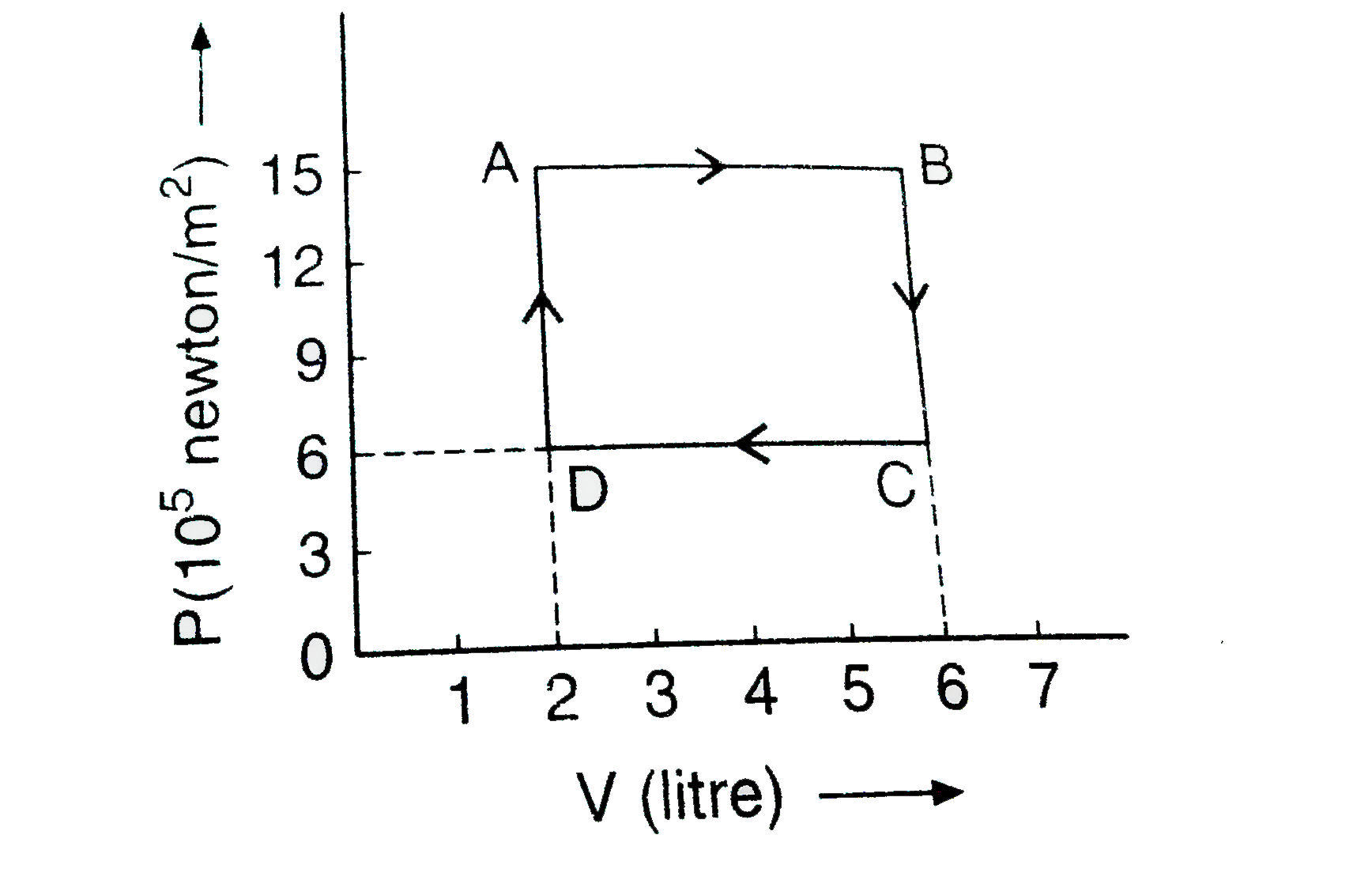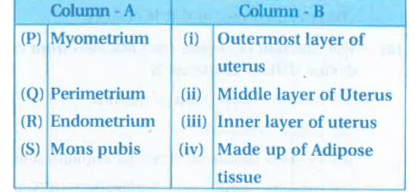Calculate the amount of work done in taking the gas from the state (i) P to Q (ii) Q to R (iii) R to P (iv) the entire cycle,
 Solution in Kannada
Solution in Kannada

(i) Work done from P to Q : V2−V1=(5−25)=−20m3
W=P(V2−V3)=−5×20=−−100J
(ii) Work done from Q to R = Area QRMNQ=12(QP)(RP)+(MN)(PM)
=12(20)(15)+(20×5)=+250J
(iii) Work deon from R to P
ΔV=0 hence W=PΔV=0
(iv) Work done uring one cycle =12bh=12×QP×RP=12×20×15=150J
Topper's Solved these Questions
- BOOK - SUBHASH PUBLICATIONCHAPTER - THERMODYNAMICSEXERCISE - FIVE MARKS QUESTIONS WITH ANSWERS6videos
THERMODYNAMICS
- BOOK - SUBHASH PUBLICATIONCHAPTER - THERMAL PROPERTIES OF MATTEREXERCISE - FOUR MARKS QUESTIONS AND ANSWERS22videos
THERMAL PROPERTIES OF MATTER
- BOOK - SUBHASH PUBLICATIONCHAPTER - UNITS AND MEASUREMENTS EXERCISE - NUMERICALS WITH SOLUTIONS13videos
UNITS AND MEASUREMENTS
Similar Questions
Derive Mayer's equation from the I law of thermodynamics.
01:33View SolutionShow that R=8.314 Jmol−1K−1
04:04View SolutionThe period of oscillation (T) of a simple pendulum depends on the probable quantities such as mass 'm' of a bob, length 'l' of the pendulum and acceleration due to gravity 'g' at the place. Derive an equation using dimensional analysis.
06:25View SolutionIf P={1,5,7,10},Q={5,10,12,17} and R={1,10,12,18,21} find (i)P uu Q(ii)Q uu R
04:16View Solution
In the adjoining diagram, the p-V graph of an ideal gas is shown. Find out from the graph (i) work done in taking the gas
From the state A→B (ii) Work done in taking the gas from B→C (iii) Work done in a complete cycle. (1 litre=10−3m3)04:26View SolutionFind the truth values of the following compound statements :
(i) P∧(q∧r) (ii)(p∨q)∨r
(iii) p∧(q∨r) (iv)(p∧q)∨r01:34View SolutionSimply
(apaq)p+q−r.(aqar)q+r−p.(arap)r+p−q10:51View SolutionIf P={1,2,5,7,9}, Q={2,3,5,9,11}, R={3,4,6,7,9} and S={2,3,4,5,8} then find
(i) (P∪Q)∪R) (ii) (P∩Q)∩S (iii) (Q∩S)∩R04:35View SolutionIf the inverse of implication p→q is defined as ~p→~q, then the inverse of the proposition (p∧~q)→r is not equivalent to :
I : ~r→p vv q<br>II:~p vv ~q rarr ~r<br>III:r rarr p ^^ ~q
The true statements in the above are :05:49View SolutionFind the truth values of the following compound statements :
(i) P∧(q∧r) (ii)(p∨q)∨r
(iii) p∧(q∨r) (iv)(p∧q)∨r02:17View SolutionMatch Column A with Column B

(A) (P-i), (Q-ii), (R-iv), (S-iii)
(B) (P-ii), (Q-i), (R-iii), (S-iv)
(C) (P-ii), (Q-iii), (R-iv), (S-i)
(D) (P-iv), (Q-iii), (R-ii), (S-i)08:34View SolutionMatch the following (A) (i-P), (ii-S), (iii-R), (iv-Q) (B) (i-Q), (ii-S), (iii-P), (iv-R) (C) (i-Q), (ii-P), (iii-R), (iv-S) (D) (i-P), (ii-R), (iii-Q), (iv-S)
03:10View SolutionAn ideal gas undergoes a process P→Q→R as shown in pressure (p) - volume (v) diagram.The work done by the gas is
09:13View SolutionFind the truth values of the following compound statements :
(i) P∧(q∧r) (ii)(p∨q)∨r
(iii) p∧(q∨r) (iv)(p∧q)∨r03:00View SolutionMatch the following a. (i)- (r), (ii)- (p), (iii)- (s), (iv)- (q) b. (i)- (s), (ii)- (p), (iii)- (q), (iv)- (r ) c. (i)- (r), (ii)- (q), (iii)- (p), (iv)- (s) d. (i)- (r), (ii)- (p), (iii)- (q), (iv)- (s)
07:14View Solution

